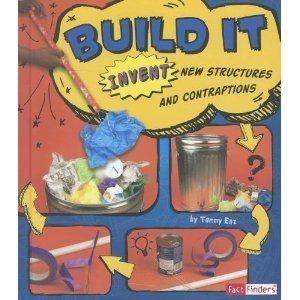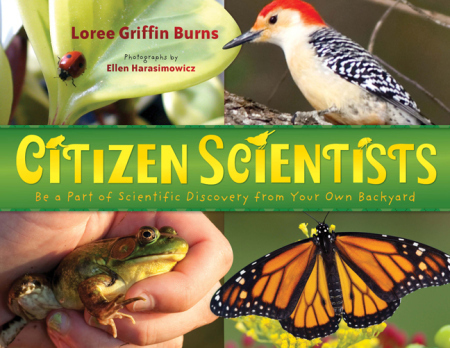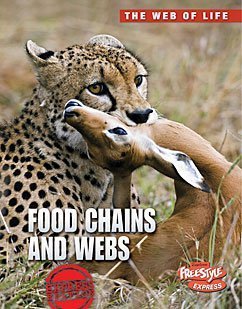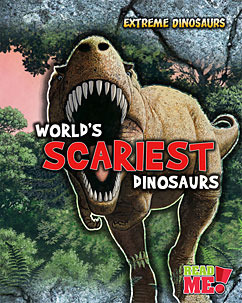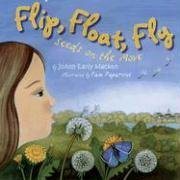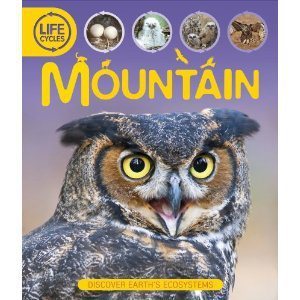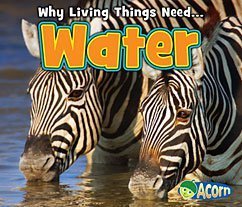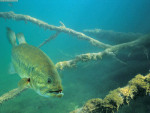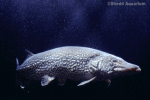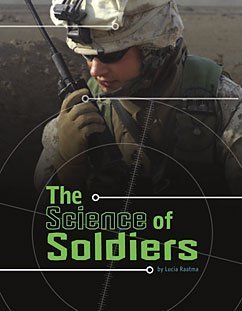Shirley Smith Duke's Blog, page 3
July 31, 2012
Scorpions
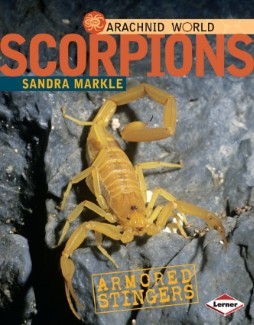
By Sandra Markle
Lerner, 2011
ISBN #978-0-7613-5037-8
Grades 4-8
Nonfiction
“Wecome to the world of arachnids. They can be found everywhere on Earth except Antarctica.”
Scorpions are not my favorite animal, but Markle makes them fascinating enough to interest even the most arachnophobic reader. An excellent book for readers from elementary ages through middle school, the narrative begins with an explanation of why scorpions are classified into the arthropod group. The introduction is followed by three pages of an easy-to-read diagram of the inner and outer anatomy of scorpions. These terms illustrated in the diagrams are used in the text throughout the book.
The book explains the life and habits of scorpions, including the life cycle and defensive adaptations. Full page photographs show the various species of scorpions in their habitats. Small sidebars give additional facts of interest as a Scorpion Fact. The ending concludes with more information about classification and the value of scorpions to humans.
Back matter has more armed defenders, a glossary, books, websites, an activity, and an index. It’s one of six books in the Arachnid World Series by Lerner. Markel shows her usual excellent fact-finding and writing to make this a terrific read. It’s a perfect book for good elementary science readers but best of all will attract the middle school readers, too.
Activity
After reading the book, find at least five adaptations that scorpions have that helps them stay alive. How many can you find? I found seven on a quick glance back through the book. You might find more!
National Geographic has more information about scorpions.
This site has good information about adaptations with really good illustrations, although it stating that it is for grades 3-5 might put off older readers.
This site has a game where you choose the adaptations. An adaptation challenge along the right side has more games.
National science standard: adaptation
Book provided by Lerner.


July 25, 2012
BUILD IT Invent New Structures and Contraptions
Invent New Structures and Contraptions
By Tanny Enz
Capstone, Fact Finders, 2012
ISBN # 9781429676359
Grades 3-6
Nonfiction
“The world is full of wonderful, puzzling, everyday problems waiting to be solved. Inventing contraptions to solve those problems is what engineers do. But you don’t need to be an engineer to invent like one. Ask how you can solve them.”
Author and engineer Enz explains her interest in engineering and conveys her excitement about the subject. With the emphasis on STEM (Science, Technology, Engineering, and Mathematics) today, it’s great to find a book that addresses engineering for readers under twelve. This book does just that!
Build It focuses on how engineers go about solving problems using six steps of inventing. It explains the process of problem solving from an engineering point of view and then goes on to show readers how to solve specific problems that might occur in their world. The two to three pages dedicated to each problem list the steps and show a photo of what each step involves to create the new invention. The projects range from building a newspaper fort to making a pet watering dish. The projects are presented in the problem solving process and the photos are numbers for ease of following the directions. New vocabulary is defined on the page and in a glossary.
Each project also includes a sidebar telling about a success that came from a failed project, like how cereal flakes were discovered by the Kellogg brothers. The variety of projects will suit most readers and can be made with easily found materials. A few of the projects have steps that will require a minimum of adult help, but most of them can be done by the readers of this age. Back matter includes a glossary, read more, internet sites, and an index.
It’s good to see engineering defined and explained in a book for both girls and boys. It’s an excellent summer reading book but extends to the school year, as projects could be done in classes with groups. The relationship of math, science, and technology is evident and practical. What a great way to interest readers in STEM!
Activity
Try one of the activities from the book. Identify the problems and success you have. Then identify a problem you’d like to solve and use the 6 steps to help you solve it. Analyze what worked or didn’t work and show someone your ideas.
This excellent site has definitions, activities, and explanations about engineering.
This site has additional activities for kids.
National Science Standards: Defining and Delimiting an Engineering Problem; Developing; Possible Solutions; Optimizing the Design Solution
Book provided by Capstone Press


July 17, 2012
Citizen Scientists
Photographs by Ellen Harasimowicz
Henry Holt, 2012
ISBN #9780805095173
Grades 3-7
Nonfiction
“It’s not a phrase you hear every day, and it doesn’t exactly roll off the tongue. But citizen science is the beating heart of this book, so we’d better start by defining it.”
“Citizen science, then, is the study of our world by the people who live in it.”
Swing a net to catch a monarch butterfly. Count birds in the winter. Identify frog calls in the spring. Sweep a net to identify ladybugs in the summer. You’ll be a scientist, too.
Citizen Scientist is a fascinating narrative combined with carefully explained sets of procedures that sweeps readers into the world of science that they can do. Their participation becomes a significant part of real life scientific research and teaches young people the skills and values of science in their lives.
Burns’s book takes readers on an adventure that leads them directly into the world of science that is found in their own neighborhood. It gives kids the power to contribute to the body of knowledge about the four animals discussed in the book: monarch butterflies, birds, frogs, and ladybugs. Her second person narrative is friendly and encouraging, giving the reader the sense she’s talking directly to them. Each section has a checklist for the equipment and gear needed to study that animal. Additional information is included about the specifics of each of the animals’ studies. This information is enhanced by the lovely photographs by Harasimowicz.
A “Now What?” section give resources for each animal about books and sources for more facts and the groups that organize the information presented in the book. More resources, quiz answers, a bibliography, and glossary round out the back matter.
I heard Loree talking about this book last year and wondered what it would be like. She’s hit on a terrific format that puts kids directly into science in a fun, meaningful way. This book hits the Common Core Standards perfectly and is likely to inspire budding scientists and novices alike to be involved. It’s a book for everyone—kids, parents, teachers, and librarians. Who knows what future scientist will get her or his start by reading this book?
Activity
Choose one of the animals and look up the organizations that work with studying it. Find out more about how you can become involved. Make a model of the butterfly or ladybug, or learn two or three frog calls. Check out a bird book and identify three birds in your backyard. Then maybe you’ll participate in one of the events talked about in the book.
Resources: Check out the extensive list Burns added to the back matter for more information.
Here’s a review from 100 Scope Notes.
National Science Standards: biodiversity and humans; applied science
Book provided by Henry Holt and Company BFYR


July 10, 2012
Food Chains and Webs
By Andrew Solway
Raintree, 2012
ISBN #9781410944245
Grades 5-8
Nonfiction
“Living things need food to stay alive. That is simple and obvious. But if you start looking at what food different organisms need, and how they get it, it all gets complicated very fast.”
This book puts food chains and webs in the perspective of energy, making it an appropriate book for the upper elementary grades and middle school students. The book introduces food by making connections and includes a diagram of this overall concept.
From energy, the book goes on to trace the different groups of producers and consumers, filling in details on the range of concepts that accompany each topic. Sidebars, diagrams, and photos add additional information. For example, the producers are presented in the usual manner, but then it goes on to include phytoplankton and other unusual producers, taking the information to a higher level than the basic food web. The book illustrates specific examples of the text using photos and captions to further explain.
Vocabulary is bolded on the page and defined at the bottom of the page. The book makes the connection to people as humans and clears up or explains confusing terms or misconceptions about the vocabulary related to this topic.
Food Chains and Webs includes a case study of the Antarctic, a spread about the changes inflicted on organisms by people, and a conclusion. This is a fantastic book, filled with information for this aged reader, and certainly fills a most-needed niche for this topic.
Back matter includes a glossary, bibliography, websites, an index, and a list of three topics to research. This is a terrific book! It would have been in my middle school classroom when I taught.
Activity
Look up plant life and animals in an ecosystem. Using the information you read, list producers and consumers. Then create a food web of your own. Label the organisms with their names and place in the food chain. For the artistic, draw or find pictures of the organisms and add that to the food web.
Here’s a practice activity.
Information for younger readers
Use these organisms to create a prairie food chain.
Animals to use to create your own food web or chain.
Here’s a good explanation of food webs.
Book provided by publisher.








July 3, 2012
World’s Scariest Dinosaurs
By Rupert Matthews
Heinemann Library, 2012
Extreme Dinosaurs Series
ISBN: 9781410945259
Grades 2-4
Nonfiction
“The world was a terrifying place 100 million years ago. Dinosaurs far larger than any animal alive today walked the land. Some of them were fierce hunters, while others were scary beasts with horns and spikes.”
Dinosaurs aren’t my favorite subject in science, yet kids love them and I’ve come to terms with them where I am interested more than in the past. This book most certainly will pull in young readers with its good information and fascinating illustrations. I loved the reptilian expressions on the dinosaurs’ faces and kids will, too.
The focus of this book is the most extreme “bad guys” of the dino world. The first page introduces the topic and each short chapter of a spread introduces the different kinds. One thing I liked was that the comparison of each dinosaur’s size was related to something the reader would know and could understand rather than massive weights that are difficult to picture. Other large reptiles from the time are pictured toward the end of the book.
Some art is labeled with one word tags while others have a short caption to add an interesting detail. The final page relates the study of dinosaurs to the occupation of paleontologist or to fossil hunting as a hobby. The back matter has a glossary, books, websites, and an index. This 32 page book uses vocabulary for readers in grades 1-2, but is mature-looking enough and has information to suit readers in grades 2-4. Bring on the dinosaurs—this is a fun book!
Activity
Label a sheet of paper with two columns labeled meat eater and plant eater. Go through the book to identify what each dinosaur eats and then classify each one into the right column. Introduce the terms carnivore and herbivore and add them to the column labels.
Enchanted Learning has a good dinosaur page with definitions and more information here.
Bright Hub Education has a good page with examples of herbivores and carnivores.
National Science Standards: structure and function; social interactions and group behavior
Book provided by publisher.








June 26, 2012
Flip, Float, Fly
I’m revisiting this book (one of my favorites) while I’m working this week on a Quality Review Panel. You can learn more about this organization at Creating Quality. This book was featured on The Reading Rainbow App Trailer.
Flip, Float, Fly: Seeds on the Move
Illustrated by Pam Paparone
Holiday House, 2008
ISBN# 0-8234-2043-4
Nonfiction picture book
Vivid illustrations add depth to this book that traces the wide variety of ways seeds move about. In simple, sparkling language, the movements by seeds as they spread are shown and explained as they complete their life cycle. Back matter includes more seed and plant facts and a final page adds notes about why seeds must move.
Tumbleweed plants grow as round as globes. In autumn their stems snap off. On the flat, open prairie, they ROLL, ROLL, ROLL, sprinking their seeds as they tumble.
Activity 1
Use this book to start a seed experiment. Choose one variable to test (amount of water, light and dark, planting depth, or seed type). Give each student two small paper cups and fill with soil. One is the control and the other is the variable. Use 2-3 seeds for each cup. I recommend bean seeds, because the plant grows well and relatively fast.
Set up the experiment and plant the control seeds normally. Then set up the second cup according to your choice of variable. From now on, keep everything other than the variable equal. Fill out the scientific method form as you plan and perform the experiment and watch the seeds grow.
Activity 2
Use a metric ruler and measure the growth of the two sets of bean plants in millimeters. Record the results each day. Use the results to make a line graph of both and make your conclusions.
National Science Standard: understanding about scientific inquiry, life cycles of organisms
See a review of Flip, Float, Fly.








June 19, 2012
MOUNTAIN
By Sean Callery
Kingfisher, 2012
Discover Earth’s Ecosystems Series
ISBN #9780753468104
Grades 2-5
Nonfiction
“Mountains are cold, high, and rocky, so plants and animals must be tough to survive. Birds may fly elsewhere, but most other animals stay near shelter and food.”
Mountain explores the life cycles of different animals in three sets of mountain ranges. The animal information explores their life and needs and the page turns transition into what eats them on the food chain. The Rocky Mountains, the Himalayas, and the Andes serve as a backdrop for the different habitats and habits of these mountain dwelling animals. A variety of animals allows the reader to see a different sort of food chain than often presented and the text traces the chain up to the top predator. One plant, the Alpine butterwort, is included in the narrative.
The text is accessible and broken into text boxes with the life cycle presented in the center of the spread in four sections. Photos and insets give the text support and allow the reader to experience the book features that come with nonfiction. The final spreads show silhouetted food webs derived from the food chains presented in the reading.
Back matter includes the food webs, a glossary, websites, and an index. This is a terrific way to include both life cycles and food chains in one book. It would make a good introduction to either of these science concepts and lends itself to further exploration.
Activity
Choose another ecosystem and look up the animals and plants in it. Use them to create your own food web. Draw or cut out the animals and paste them on a large sheet of paper. Draw in the arrows to show the energy flow.
This website has really good food chain information. Arrow down to the bottom to see examples of food chains in other ecosystems. This page has an interactive food web diagram that you can print when you finish.
Enchanted Learning has some good information, too.
National Science Standards: interdependent relationships in ecosystems; cycles of matter and energy transfer in ecosystems; growth and development of organisms
Book provided by Kingfisher








June 14, 2012
Why Living Things Need…WATER
Why Living Things Need…WATER
by Daniel Nunn
Heinemann Library, 2012
ISBN #9781432959173
PreK-1
Nonfiction
“Water is a liquid. LIquids are runny. Water has no smell, color, or taste.”
Water is one in a series of books that introduces young readers to the items living organisms need to survive. This necessary component of life is explored through defining water, where it comes from, who needs it, how they get it, and why it is important to living things. One sentence on a page makes that book inviting and the photographs support the text on each page.
This simple book introduces the the important concept of one of the things life needs to exist for the very early reader. It makes an excellent way to review living and nonliving things and then introduce this new concept. The rest of the books in the series include the other things all organisms need to live. The book includes a table of contents, a picture glossary, a one question water quiz, and an index.There is a notes section for an activity using water.
Activity
Take a walk around the house or classroom and outdoors. Make a list of the things you see. Then fold a paper in half and label the two colums needs water and doesn’t need water. Categorize the words on the list and illustrate them.
This site has good information, but you have to scroll down through the ads.
This site has some lessons about what living things need.
National Science Standards: Growth and development of organisms
Book provided by Capstone








June 13, 2012
Gone Fishing!
June 5, 2012
The Science of Soldiers
By Lucia Raatma
The Science of War Series
Compass Point Books, 2012
ISBN #9780756544607
Grades 6-9
Nonfiction
“Not everyone is able to be a soldier. It takes a certain kind of m an or woman to put on a uniform and face danger. For this reason soldiers are carefully screened and thoroughly trained before they go on active duty.”
This fascinating book explains the advances in military technology and how technology is being made and used to protect and aid the soldiers in the United States. My interest in the book was heightened by having a son working as a civilian at a military installation and seeing the technology he uses and develops to make safer training situations for the soldiers working there.
Different aspects of the military in all branches are covered, from fitness and basic training to eating and protective gear and equipment. Each category is covered by a chapter and the science behind the developments is carefully explained in a way readers can understand. From night vision to weapons to heating meals, how soldiers live and work is filled with amazing new changes. GPS, Kevlar, body armor, bullet tracing acoustics, rucksacks, and Bluetooth prosthetics all provide necessary means of protecting soldiers, saving lives in battle, and helping returning soldiers recover from injuries.
This is a book that will appeal to middle school readers and those readers with an interest in the military or with family members leaving for service. It’s written in a factual, narrative style and sidebars add extra information. The back matter includes a glossary, read more section, internet sites, a bibliography, and index. It’s good to know that technology, so prevalent in everyday lives, is also at work to protect the lives of those serving in the military.
Activity
Choose one of the new forms of technology discussed in the book and further research it. From the research, write an additional paragraph that would go along as a sidebar in the book. Use the voice and style of the author to convey your facts.
How Stuff Works has some information about technology.
This army site has links to various forms of current technology.
National Science Standards: influence of engineering, technology and science on society and the natural world
Book provided by Capstone








Shirley Smith Duke's Blog


